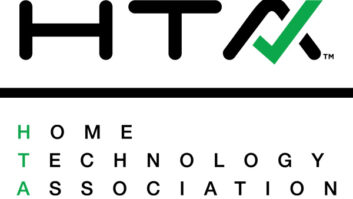In the first part of my write-up on the ProSource member summit, I recapped the State of the Business and State of the Union addresses presented, with the theme of the group being “Better Together.” In this post, I’m going to discuss the keynote speech as well as my takeaways from the three key breakout education sessions.
One of the Summit highlights for me was definitely the keynote speech given by Jason Dorsey of the Center for Generational Kinetics, where they use data to separate “generational myth from truth” and learn drivers that “shape generations in the workforce, marketplace, community, and as trendsetters.”

If you’ve ever bemoaned the work ethic or the live-at-home-in-their-parent’s-basement attitude of Millennials (aka Gen Y, persons born from about 1977 to 1995), then you would have loved Dorsey’s speech as well as his upbeat and hilarious presentation. His time was filled with equal parts education, energy, and humorous standup, frequently calling out the foibles and stereotypes of different generations. (“Where are my Baby Boomers at, raise your hands! Wow, I’ve never seen so many wristwatches at once!”)
Dorsey conveyed that generations are clues and not a box. They help you know where to start so you can faster connect with and influence people of different ages. For example, not all Millennials are lazy, in fact, they are currently the largest generation in the workforce and there are more Millennial managers than any other generation. Also, the group most frustrated with this entitlement behavior amongst Millennials is other Millennials.
Dorsey pointed out that technology is only new if you remember it the way it was before; otherwise it is all you have ever known. For Gen Z (people born from 1996 till the present), this means never knowing a world where cellphones didn’t exist. Also, that a person’s natural relationship with technology is largely influenced by their age.
By understanding people of different age groups, you can better know how to relate with them, either from a sales standpoint or from an employee relationship. Here are some quick takeaways Dorsey shared from each generation.

Baby Boomers (born 1946-64): They define and measure work ethic in hours per week, and those work hours don’t count unless they can see you working. Boomers believe in policies, procedures, rules, and steps. They are still the most influential generation in the work force as they tend to own, be on boards, handle capital, etc.
Gen X (born 1965-76): They are naturally skeptical and their attitude is “actions speak louder than words.” As Reagan said, “Trust, but verify.” They are taking care of their kids but increasingly their parents as well. They are loyal to individuals but not corporations. Gen X makes amazing leaders and managers because they don’t like Millennials or Boomers.
Millennials/Gen Y (born 1977-95): This group currently comprised 83 million people in the U.S. and last year they outspent every other generation. Millennials are not tech savvy, but tech dependent. They don’t know how tech actually works, but just know they can’t live without it. Rich Millennials often prefer not to buy from other Millennials. Millennials have been conditioned to avoid large blocks of text, and look for videos, pictures, and bullet points, so we need to market and sell accordingly. They have grown up learning to shop and buy online and that is the buying pattern they know and are comfortable with. For many Millennials, they are just entering the workforce and need to be shown not told what is expected (e.g., the company’s “business casual dress” policy). Millennials want to be perceived as unique, and want to be treated as special, one-of-a-kind.
Gen Z (1996-Present): Their parents are primarily Gen x or Millennials. They were heavily impacted by the Great Recession and were old enough to hear about it and remember how it felt in their home, but young enough that it impacted their own value system and beliefs. They tend to be fiscally pragmatic, and 12 percent of them are already saving for retirement. They intentionally choose less expensive schooling to graduate with less debt to have more options. Their “I’ll take whatever job you have, just give me a chance” attitude makes them likely to leapfrog Millennials in the workforce.
There were three separate breakout sessions members attended in groups.
The first I attended was Cause and Effect Studies in Business Performance and the Power of Key Metrics presented by Paul Starkey and Steve Firszt of Vital MGMT, where we learned that the 3700 CEDIA companies “count the money” in their own, unique ways, resulting in hundreds of ways of viewing and managing the business. This makes it very difficult to compare the financial states of different companies. Vital MGMT is urging companies towards a path of standardized counting in order to help them become more comparable and define standardized benchmarks. This helps potential strategic partners or investors more easily value and evaluate companies.
Starkey and Firszt went over using metrics to help identify and quantify opportunities for improvement, stressing you can’t improve without measuring. They also talked about developing 3-5 Key Performance Indicators (KPI) which are standardized, industry-specific, and performance-benchmarked.

Profit is the most important outcome of our businesses. “Revenue is vanity, profit is sanity.” There are only three ways to increase your gross margin: raise prices, reduce costs, or sell a stronger mix of higher margin goods.
They suggested integrators should raise margins by increasing mix of parts and labor, and should also target labor at a higher percentage of total project revenues, and think a 60/30/10 (equipment, labor, parts) mix on jobs.

Another key way to increase profitability is by increasing employee productivity. A typical tech bills 20-23 hours per 40-hour work week. Techs can be more productive through better logistics and work documentation and by helping to eliminate the typical job “time killers.”
Gross profit goes out on the backs of your technicians: “If you break even on labor, you’re losing money in this business,” Starkey said.
My second session was The Impact of EOS (Entrepreneurial Operating System) and how to use it to get the most from your business by Brad Whitehead of VX Strategy. Whitehead’s key question was, “Are you running your business or is your business running you?”
Many owners face the same common frustrations: lack of control, cashflow issues, people problems, hitting the ceiling, and feeling nothing is working. EOS was developed by Gino Wickman in his book Traction – Get a Grip on Your Business, and now over 50,000 companies are using EOS tools.

The objectives of this management philosophy include: Vision (defining who you are as a company, where you’re going, and how you will get there); Traction (discipline and accountability on actions with a rhythm); People (you need great people to go anywhere in this business); Data (boiling business down to hard numbers, having a scorecard and measurables); Issues (create an issues list and strengthen muscle within business to solve issues — making the wrong decision is almost always better than making no decision at all); and Processes (documenting them so they are followed by all).
The EOS strategy is ideal for privately held small-to-medium-sized business, with employees between 10-250, that are departmentally organized and growth-oriented with a continuous improvement philosophy. It also requires an owner that embraces a strong leadership team and not a dictatorship
The final breakout was Lighting: The next big business? presented by David Warfel, an educator, author, and lighting designer practicing in architecture, light, and experience design.

In the past thousands of years, we organized our lives around light. First the sun and moon, then fire and candles, then gas/oil lamps, and finally the electric light bulb. We spend our lives around light, using it to determine when we wake, work, play, and sleep. In the beginning, light was a gift, and our brains were hardwired to the sun.
But after Edison tried monetizing electricity, lighting became a utility, something people paid for and it went from being a gift to a utility. And we reorganized our lives around artificial light.
Now the choice of picking an LED bulb in lumen and light output and color temperature is almost overwhelming to customers who often end up buying the wrong choice. Lighting design is often done by the electrician as they hurriedly walk through a jobsite with a homeowner. Since the electrician is often motivated to keep his price low so he’ll continue getting more jobs, he often puts in only single bulbs where multiple lights should be used to cover different areas in living spaces with different level of light.
Light affects our brain through both circadian rhythms and the way we feel emotionally. Hospitals are now using color changing LEDs to help patients heal faster and take fewer meds during recovery. And as we grow older, our eyes change, and need more light for the same visual acuity. Understanding lighting and what Warfel describes as “the five gifts of life” — how it helps you do better, know more, feel better, focus clearly, and change easier — will help you to better upsell your clients for a better living experience.
Having a lighting designer involved on your project can help you sell more lighting controls (more loads), more areas of lights, sell more fixtures, and have happier customers.
In my final post, I’ll share some of my favorite things from the ProSource Summit manufacturer Expo.
Want more stories like this delivered to your inbox every day? Then sign up for the free Residential Systems eNewsletter here.







